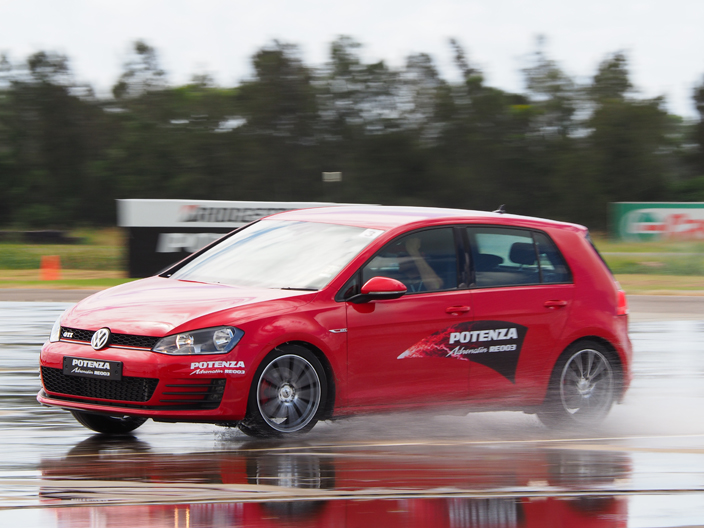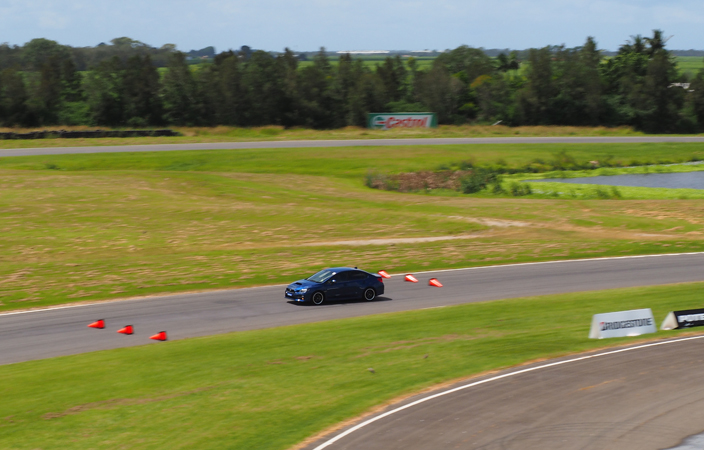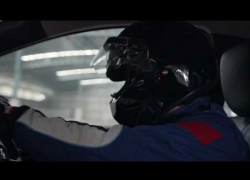A large patch of perfectly manicured asphalt, a couple of cult classics from both East and West, and more rubber than a Rolling Stones after-party, was all that Bridgestone brought to their launch of the new Potenza Adrenalin RE003. But boy was it enough to wake up the neighbors.
On the menu was a 2015 WRX and the Golf GTi wearing a mixed collection of RE002s, RE003s, and some of the competitor’s tires––which they had enough class to file off the markings on the sidewall to avoid embarrassment.
They staged it all at the Performance Driving Center in the sunny Gold Coast and had just one simple brief: Drive. Sure there were some parameters, like suggested speeds etc, but in essence, it was quite simply designed to feel everything for yourself.
Let me just say, before I numb your brain with technical quotes from the PDF files we received on a thumb drive, that this is the way to launch a performance tire. Period. Anything more is like trying to explain dance with algebra. A good tire is felt; and that can't happen in powerpoint.
Needless to say, there’s a ton of new technology in the RE003. But honestly, as impressive as it all is, I run the risk of us both losing all feeling in our left side and slipping into a silica-based coma if I tried to explain it. Unless of course you’re a competitor.
So to put it as simply as possible, the RE003 promises 3 key improvements:
Responsive and precise handling.
Outstanding cornering performance.
Superior wet braking control.
Now, to demonstrate this, Bridgestone set up three different driving stations with identical cars using either the competitor’s product or the RE002s.
First up was the wet skid pad––which loosely translated is like the big kid’s version of the plastic sheet you placed on your garden, then hosed it down with dish washing liquid. We drove around in circles until we lost grip on the front end. We were then asked to do the same thing with the RE003.
Immediately, you feel the break away point of the RE003 is noticeably later. There’s also a little more notice and warning sent through the steering wheel. But most importantly, when you lift off abruptly, the back end doesn’t go all Melissa Mendez on you and flipout. These are exaggerated conditions, of course, but a an accurate magnification of the handling characteristics during emergency maneuvers in slippery conditions.
Next up was the long course, where high-speed stability and cornering performance was put on trial. Once again, the differences are difficult to quantify, but the RE003s are more about giving you a feeling of confidence as you lean on the tire in a long sweeper then make a sudden change of direction.
But as 'unquantifiable' as it may be to the human bum, you don't need advanced measuring equipment to feel that understeer was noticeably less. It also gives you more notice before letting go. Also, as this was a station that pitted it against the competitor’s product, I was curious to see how different the steering inputs would be in the same corners at the same speed. With that in mind, I entered at exactly the same speed each time and immediately noticed anywhere from about five to ten percent less input on the RE003s as I did with the competitor, depending on the angle of the corner.
Lastly was the slalom and a massive emergency wet lane change that (judging by the screams) was more a test of our bladders than the tires. The pro drivers drove into the wet skid pad and then hit a spinning turntable that simulates being hit on the rear quarter panel. The result was a violent swing that they wanted to simulate how quickly they could regain control due to the behavior of the tire.
Bridgestone credits this all to the pulse grooves that use a wave like design, as well as deflectors that improves drainage and a new three and a half groove sports design that creates an even contact patch that quickens initial steering response to react the instant the wheel is turned. Whatever. End of the day, it feels good and does what its told; which is all anyone should expect from a good tire.








